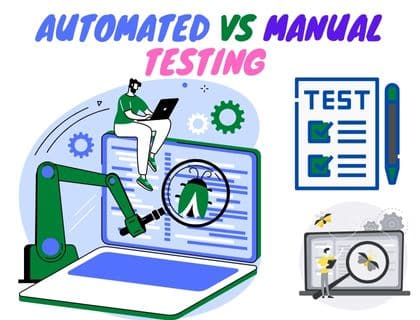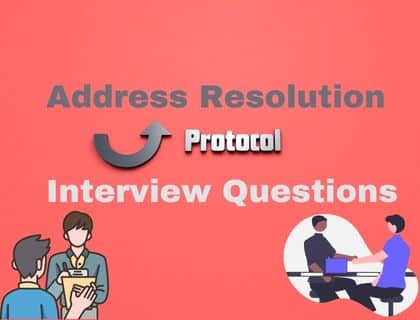
Data engineers are essential to the growth of data-driven projects. They manage data and have a strong knowledge of how it flows through a system so that everyone else on the team knows what they’re doing as well. In simple terms, data engineers make sure everyone is busy working on tasks that ultimately provide value to the company or customers.
Data engineering involves the gathering and validation of data to aid the company in meeting its goals. To help you prepare for an interview with Amazon, we will be providing a list of questions that you may be asked. We hope that this information will help you in your job search and give you a better understanding of what the role of a data engineer at Amazon entails. Stay tuned for our next post, which will cover questions specifically targeting data engineering roles at Amazon!
Amazon Data Engineer Interview Questions
You never know who you might meet at your next tech event! If you’re an engineer seeking a new opportunity, it’s important.
What is an Amazon Data Engineer?
A data engineer is a professional who extracts business value from big data. They use their technical skills to design, build, and maintain the systems that collect and store data.
Qualities of a Data Engineer at Amazon
For a successful data engineer role, it is important to be able to think creatively and critically about how to solve problems. It is also important to be able to work independently and as part of a team. Excellent communication skills are also essential, as data engineers often need to collaborate with other organization members to get their work done.
If you are interested in pursuing a career as a data engineer, it is important to have a solid technical background and be able to think analytically. It would help if you also were comfortable working with large amounts of data. The best way to prepare for a data engineer interview is to practice your problem-solving skills and to gain experience working with data warehouses and databases.
The qualities of a successful data engineer at amazon include:
- Analytical skills: Data engineers must be able to understand and use large amounts of data.
- Technical skills: These engineers need to be able to build and maintain the systems that collect and store data.
- Problem-solving skills: The work of a data engineer can be complex, so they must be able to solve problems efficiently.

Amazon Data Engineer Interview Process
Amazon data engineer is one of the most crucial jobs if you want to build a career as a data engineer. The data engineer job requires a lot of hard work and effort. There is a lot of demand for Amazon data engineer jobs where there are many people are applying for the same job. So you need to stand out from the crowd to get an Amazon job.
After applying for the job, a recruiter conducts a round of screening interviews by phone. Candidates then move on to the second phase of interviews which typically last around 1 hour and consists of two separate rounds – one hour SQL/Data Modeling questions followed by another hour or so of in-depth database management and data warehousing questions. The final stage is an onsite interview held at or near your company’s office with 3-4 different members from the department you’ll be working in who will ask you behavioural questions.
So, if you’re hoping to land a job as an Amazon Data Engineer, read on! You’ll find everything you need to know about the interviewing process here. Recruiter Phone Screen Questions Technical Phone Screen Questions Onsite Round Questions
Recruiter Phone Screen
The recruiter phone screen is a preliminary interview used to determine if the candidate is qualified for the next round of interviews. Recruiters will typically ask questions about your experience and education to start the interview process. They may also ask about your motivation for wanting to work as a data engineer and what you know about the role. Here are some sample questions:
- Share your experience working with data?
- What types of data did you work in previous jobs and what was your role?
- What motivated you to pursue a career in data engineering?
- share your Python or SQL experience what type of projects you have done?
- Tell us the difficult technical challenge you faced and how you solved it?
Technical Phone Screen
The technical phone screen is used to determine if the candidate has the necessary technical skills. The questions asked in this round are more specific and aimed at determining how well the candidate understands big data and its uses.
The technical phone screen will focus more on your skills and experience as a data engineer. You may be asked to solve coding challenges or answer questions about your experience working with data. Some of the questions that may be asked include:
- Write a SQL query to find the number of orders placed by each customer.
- Write a Python script to analyze Twitter data.
- Transform a list of tuples into a dictionary.
- How would you design a data system?
- how to Reverse a String in Python language.
- Share your experience with big data?
- What are some of the challenges you have faced with data?
Onsite Round
The onsite round is the final round of interviews and determines if the candidate is suited for the job. The questions asked in this round are more specific and aimed at determining how well the candidate understands big data and its uses.
The onsite round will include more in-depth questions about your skills and experience as a data engineer. You may also be asked to discuss specific projects you’ve worked on or whiteboard coding challenges. Here are some sample questions:
- How would you design a data system to store & track data for an e-commerce company?
- what do you suggest for solving duplicate data problems in a big data set?
- Which methods can you use to transform data from a MySQL table into Amazon Redshift?
- Create a Python script that calculates the average word length of a text file.
- Implement a sliding-window algorithm in Python.
- What is your experience with data mining?
- Share the challenges you have faced with data?
- Can you give an example of a time when you had to analyze a lot of data?
- Please share your experience with machine learning?
- How would you go about solving this problem?
- What are some of the challenges you have faced with data storage?
You must have experience with coding languages like Python and SQL and big data technologies like Amazon Redshift and Apache Spark. They must also be able to solve complex technical challenges, so be prepared to answer questions about your experience doing just that.
Most Asked Question of Amazon Data Engineer Interview:
If you’re looking for a job in data engineering, you’ll need to be prepared for some tough interview questions. In this article, we’ll look at some of the most common questions asked during interviews for data engineer positions and provide tips on how to answer them.
We’ll also discuss the role of a data engineer and what qualities are essential for the job. Following are some questions and answers regarding theAmazon Data Engineer Interview:
What is your experience with data warehouse concepts?
To answer this question you must have some Data warehouse concepts, these concepts involve the storage and retrieval of data. The data is organized to make it easy to access and use. A central repository of data for an organization. Data can be used to report, analyze, and make decisions. Data in a data warehouse may come from multiple sources. The data is usually cleansed and normalized before storing it in the warehouse. The warehouse can be used to support decision-making processes across the organization.
How have you tuned databases for performance?
You will be responsible for building and maintaining data warehouses at Amazon as a data engineer. To do this effectively, you will need to understand database concepts and performance tuning techniques.
One way to tune databases for performance is by adjusting the configuration settings of the servers on which they are running. You can change things like the amount of memory or CPU cores that are allocated to the database, as well as the type of storage device that is used.
Another way to tune databases for performance is by modifying how they are designed. For example, you can optimize their indexing strategies or partition them to make them more efficient.
Finally, you can also tune databases by tweaking the code that runs on them. This can involve things like adjusting the way that queries are executed or caching data in memory.
What is an ETL process?
ETL stands for Extract Transform and Load. This step extracts data from the source system and places it in a staging area. The Transform step then transforms the data into a format that is suitable for loading into the target system, and the Load step then loads the data into the target system.
Why is it important to optimize ETL processes?
Optimizing ETL processes is important because it can improve the performance of your systems and increase their speed. For a data engineer interview preparation, it is important to review the basics of data warehouse and database concepts. It is also important to be familiar with standard performance tuning techniques. It is also helpful to have a basic understanding of ETL processes.
What is Data Modeling?
Data modelling is one of the most critical phases of any project. It is used to provide a structure to the application’s data, and thus it is mostly used by Information Technology. This is a must-know concept if you are working in an IT company.
DW modelling techniques and a clear knowledge of translating needs into the appropriate data models, such as physical, logical and business physical models. For more data modelling interview questions and answers you can visit here.
What is your experience with big data?
Big data is a term used to describe the large volume of data that is too complex for traditional data-processing methods. Data engineers are experts in dealing with big data, and they know how to collect, store, and analyze it in a way that yields business value. You can share your previous projects to answer this question.
What technical skills do you have?
Data engineers need to have strong technical skills. They must be able to design and build systems that can handle large volumes of data, and they must also be able to analyze that data to extract business value. You answer this question by sharing the technical skill of previous experience.
How would you solve a problem related to data?
When faced with a big data problem, data engineers use their technical skills to find a solution. They may need to design new systems or modify existing ones, and they also need to be able to analyze the data to find a solution.
Can you give me an example of when you had to analyze a lot?
Answering this question is an excellent opportunity for data engineers to showcase their analytical skills. They can share a story about when they had to analyze a large volume of data to extract business value.
What is Data Warehouse?
A data warehouse is a collection of data organized for reporting and analysis. It usually contains historical data that has been cleansed and transformed to make it suitable for analysis.
What do you mean by OLAP in data warehousing?
Online Analytical Processing reer to OLAP. This is a method to analyze data from a data warehouse.
What are the different types of dimension tables in the context of data warehousing?
There are three types of dimension tables: time, geography, and product. Time dimensions contain information about when events occurred, geographical dimensions contain where events occurred, and product dimensions contain information about what events occurred.
How to debug a long-running SQL query?
There are several techniques you can use to debug long-running SQL queries:
- Use the EXPLAIN statement to get a summary of how the query will be executed.
- You can use the SET STATISTICS IO ON statement to get information about how much disk I/O the query is performing.
- SET STATISTICS TIME ON statement is used to get information about how much time the query takes to execute.
- SHOWPLAN_TEXT function to see a detailed plan of how the query will be executed.
What python libraries have you used to work with S3?
There are many python libraries you can use to work with S3:
- boto – This library provides Python bindings for the Amazon Web Services API.
- aws-sdk – This library provides a higher-level interface for working with AWS services.
- s3transfer – This library provides utilities for copying files and directories to and from S3.
What is star schema, what are its pros and cons?
Star schema can be used for OLAP analysis. This has one fact table, surrounded by dimension tables. The advantage of star schema is that it is easy to understand and query, and the disadvantage is that it does not scale well to large datasets.
What is a dimension table and What is a fact table?
A dimension table contains information about a specific category of data. Whereas a fact table is a table that has data that can easily be summarized and analysed. It usually has one or more foreign keys to the dimension tables.
Explain the design schemas – star schema and snowflake schema (Data Warehousing)
The star schema is a data model that is used in data warehousing. It is designed to improve the performance of aggregate queries. The snowflake schema is a variation of the star schema, and it is designed to enhance the performance of join queries.
Write SQL queries for a given order table (this one is frequently asked)
SELECT OrderID, CustomerID, EmployeeID, OrderDate
FROM Orders
ORDER BY OrderDate DESC
SELECT OrderID, CustomerID,EmployeeID,OrderDate
FROM Orders
JOIN Employees ON Orders.EmployeeID=Employees.EmployeeID
WHERE Orders.CustomerID=’ALFKI’
SELECT OrderID, EmployeeID,OrderDate
FROM Orders
WHERE Orders.EmployeeID=’285′
Design a data model to track products from vendors to the warehouse and ultimately to customers.
The data model should track the following information:
- Vendor name
- Product name
- Warehouse location
- Customer name
- Quantity of product in stock
Create a data model for a multinational company like Amazon.
The data model should track the following information:
- Country
- Region
- City
- Product category
- Product name
What is the difference between a correlated query and a nested query?
The correlated query is a SQL query that uses data from one or more tables that are not explicitly included in the query. A nested query is a SQL query that is included in another SQL query.
What is a chasm trap?
A chasm trap is a condition that can occur in decision trees when the value of a variable determines whether or not to split the tree on that variable. This can result in two branches of the tree having very different values for the variable.
What is an index? Give the different types of indexes and explain and differentiate between them.
An index is a structure that improves the performance of searches on a table. The different types of indexes are:
- The clustered index is a data structure that stores the data for a table in order. This is the primary index for a table.
- The nonclustered index is a data structure that stores the data for a table in alphabetical order. This is used to improve the performance of queries that do not use the Primary Key.
- The covering index is a data structure that combines the data for two or more tables and it is used to improve the performance of queries that join two or more tables.
- Unique indexes are data structures that guarantee that no two rows of a table have the exact same value for the indexed columns. It ensures the uniqueness of values in a column.
- The composite index is a data structure that combines the data for two or more columns. It is used to improve the performance of queries that use two or more columns.
How would you design a system to store and track data for a large e-commerce company?
Designing a system to store and track data for a large e-commerce company, you would need to consider factors such as the volume of data, the rate at which it is generated, and how it will be used. You also need to create a schema that can be easily scaled as the data grows.
What methods would you use to ETL data from a MySQL database into Amazon Redshift?
To ETL data from a MySQL database into Amazon Redshift, you could use the COPY command to load it into S3, and then use Spark or another tool to load it into Redshift.
How would you recommend solving the problem of duplicate data in a big data set?
One way to solve the problem of duplicate data in a big data set is to use a deduplication algorithm such as the Louvain algorithm.
Final Words
If you’re looking for a job in data engineering, practice answering these types of questions. And don’t forget to do your research on the role of a data engineer and what qualities are essential for the job!
These are just a few of the questions you might be asked in a data engineer interview. You need to be prepared to answer questions about your experience designing and building data systems. You should also be familiar with data warehousing and OLAP analysis. Good luck!













